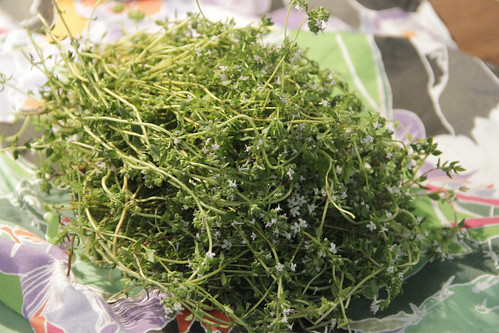As I last posted, the community garden is covered in green. Not only are there plots of cover crops, but there are a few large areas of lamium/dead nettle and chickweed.
Last Saturday I harvested dead nettle, chickweed, dandelion greens, and sorrel to make a pureed green soup. I'm not a big smoothie fan (they go down too fast for me) so a rich warm soup is a great way to enjoy the benefits of these "wild" greens.
I've been reading Katrina Blair's The Wild Wisdom of Weeds. From her book: Dandelions are rich in beta-carotene, calcium, iron, potassium, and Vitamins C, D, and E. Chickweed is rich in antioxidants, Vitamins A C D B6 and B12. From other sources I've learned dead nettle is an important supply of nectar to bees, anti-inflammatory, and also loaded with vitamins and minerals.
Cauliflower Sorrel Soup
This recipe was loosely based on Gayla Trail's potato sorrel soup recipe, though I couldn't find my copy of the book with that particular recipe (Easy Growing). I've probably loaned it to someone, which means I just need to go get another copy for myself. Her books don't come back readily.
- one onion, sliced
- 4 bulbs elephant garlic, smashed
- 2 Tablespoons butter
- one head cauliflower, pulled apart into florets
- 4 cups chicken stock (or vegetable....something rather bland)
- 8 cups mild flavored greens
- 1 cup whole milk
- grated ginger, salt, pepper, garlic powder to taste
Sautee the onion and elephant garlic in butter until translucent, but not golden. Stir in stock, add cauliflower. Simmer until cauliflower is soft. Add rinsed and drained greens and simmer until well-wilted. Blend with an immersion blender until uniformly pureed. Add milk, season with ginger, salt, etc.






